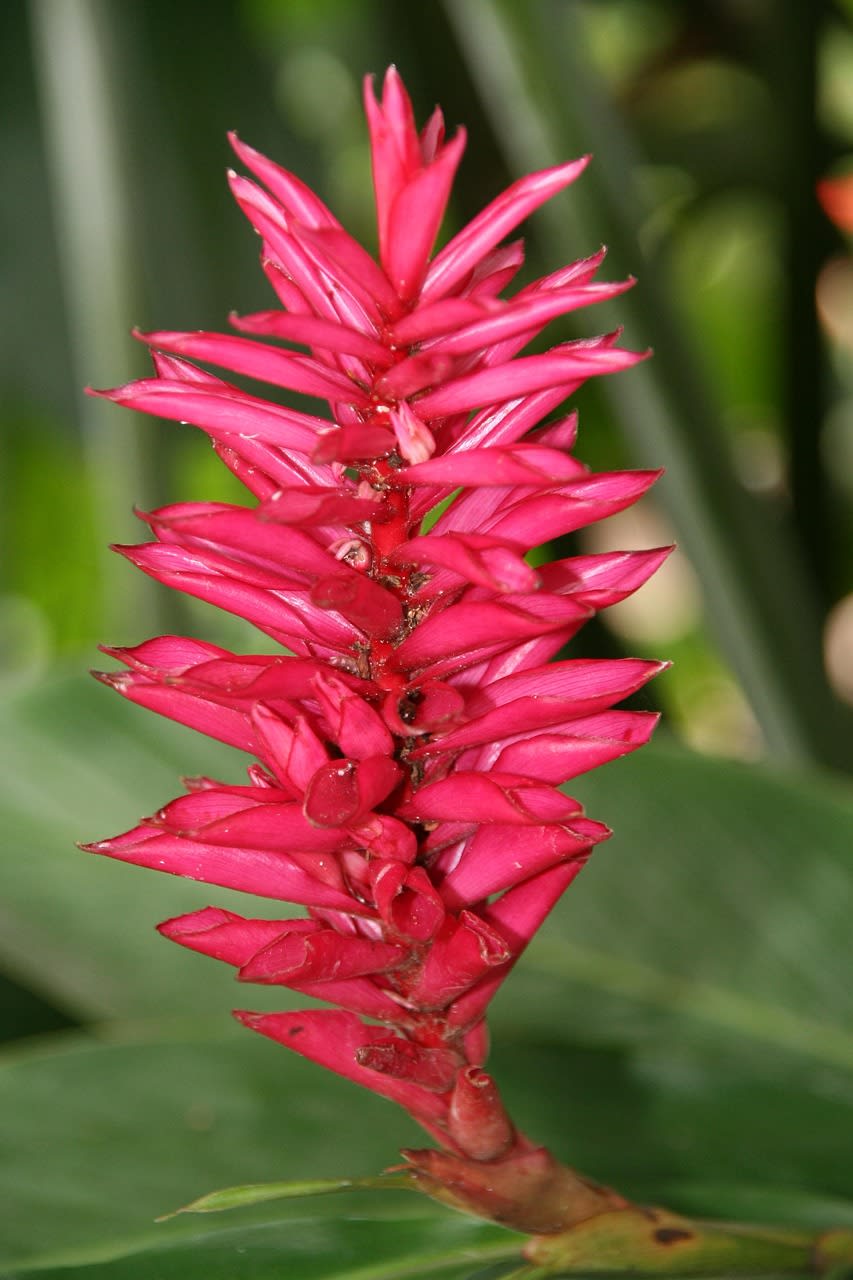Greater Galangal, Galanga, Thai Ginger, Java Ginger, Lengkuas
Alpinia galanga

🌿 Morphology
🌞 Growing conditions
🌍 Origin and family
🌾 Uses
Warning: Despite the care taken in writing this sheet, it is essential to cross-reference sources before using or consuming any plant. When in doubt, consult a qualified professional
Permaculture uses
Greater galangal is used for culinary and medicinal purposes. The rhizomes, young shoots, and flowers are all edible. The rhizomes are used in Thai, Indonesian, and Malaysian cooking as a spice. Medicinally, it's used for digestive issues, inflammation, and as an antiseptic. It can be grown in a tropical permaculture garden as a spice and medicinal plant.
Permapeople description
Alpinia galanga, also called galangal, is a rhizome used similarly to ginger and turmeric in cooking.
Botanical description
Alpinia galanga is a rhizomatous perennial herb belonging to the ginger family, Zingiberaceae. It can grow up to 6 feet tall. The plant has erect stems with long, lance-shaped leaves. The flowers are greenish-white in color and are borne in terminal panicles. The rhizomes are thick, reddish-brown, and possess a strong, aromatic fragrance. It thrives in warm, humid climates and requires well-drained soil. The plant is native to Southeast Asia.
Companion planting
Information on companion planting for Alpinia galanga is limited, but it generally benefits from being planted alongside other plants that appreciate similar tropical conditions (high humidity, rich soil). Avoid planting near plants that prefer dry conditions or are highly competitive for nutrients.
Propagation methods
Greater galangal is typically propagated by rhizome division. The rhizomes can be divided into smaller pieces, each with at least one bud, and planted in well-drained soil. It can also be propagated by seed, but this method is less common and may take longer.
History and traditions
Greater galangal has a long history of use in traditional medicine throughout Southeast Asia. It has been used in Ayurvedic and traditional Chinese medicine to treat a variety of ailments, including digestive problems, respiratory infections, and skin conditions. It was also used as a spice and flavoring agent in various cuisines. In some cultures, it was believed to have magical properties and was used in rituals and ceremonies.
Usage calendar
Harvest rhizomes year-round in tropical climates; planting is best done during the rainy season. Flowering usually occurs in the summer. Pruning can be done at any time to remove dead or damaged leaves and stems.
